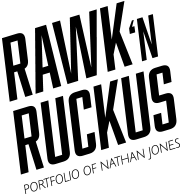

First, let me say that design process is highly dependent on the scale and circumstances of a project, product experience, product feature, or other design problem. Requirements, timelines, and available resources play a significant role in how process is followed or not followed.
Over the past 15 years, I’ve developed a process that has helped me to bring clarity to ambiguity and deliver informed design solutions. I’ve adapted and evolved the thinking below throughout my career to solve complex design and UX problems. It has served me from my days in advertising to where I am currently. Through this, I’ve learned that process cannot be overly rigid or it will not scale to meet the demands of future design challenges.
Be water, my friend.
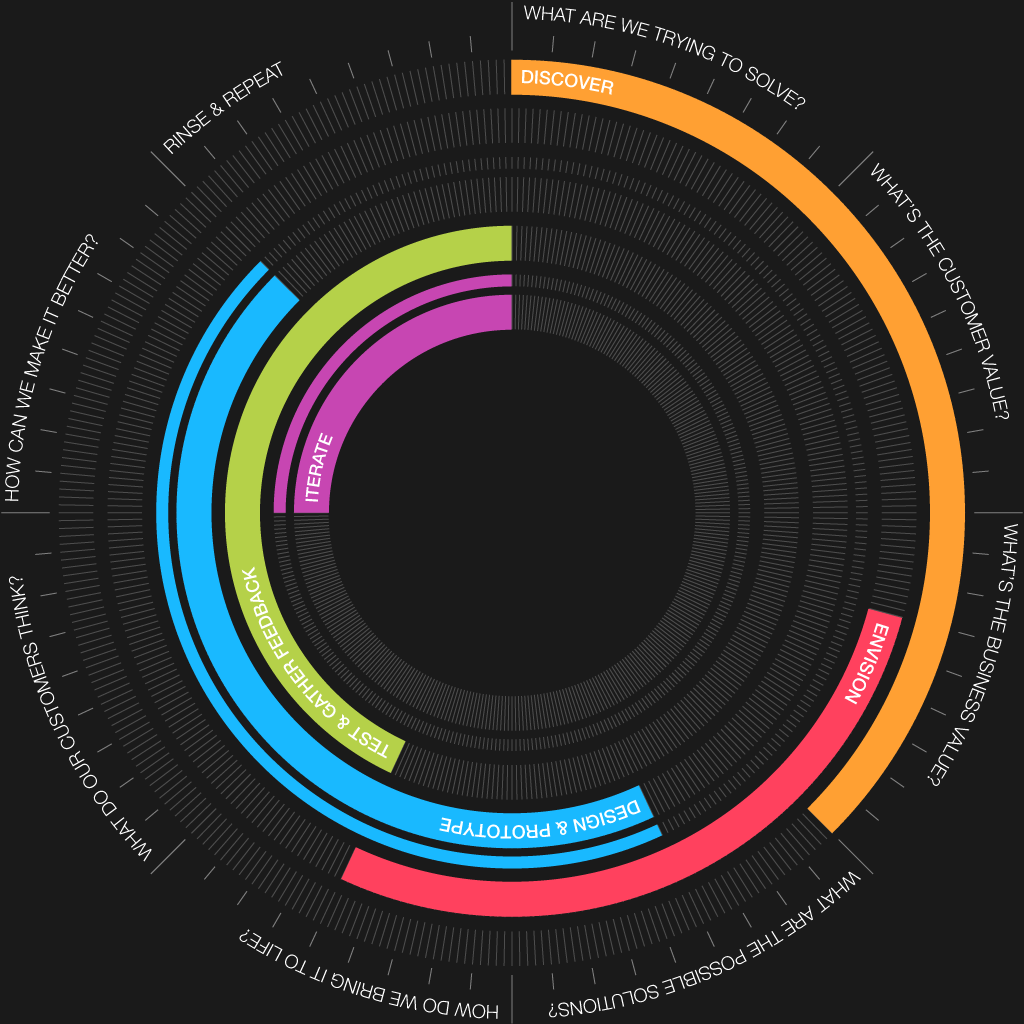
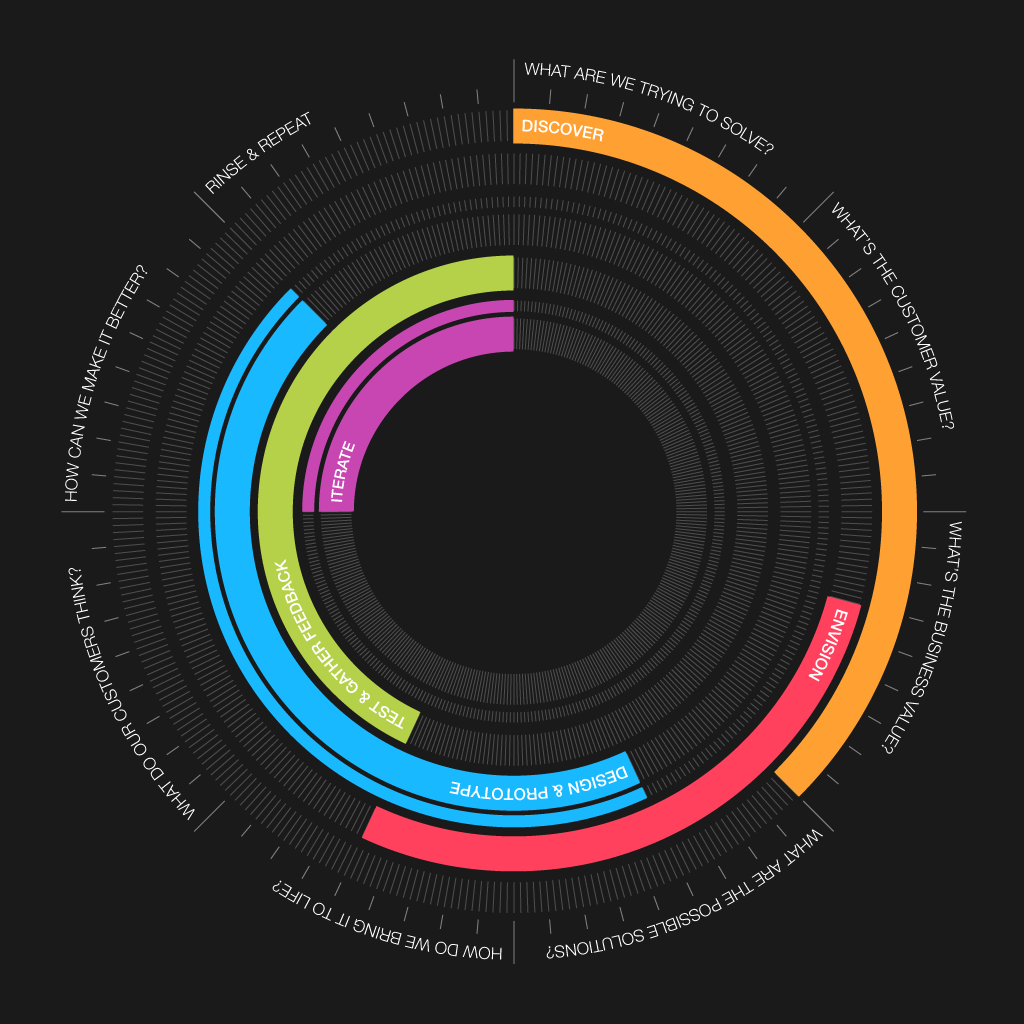
First, let me say that design process is highly dependent on the scale and circumstances of a project, product experience, product feature, or other design problem. Requirements, timelines, and available resources play a significant role in how process is followed or not followed.
Over the past 15 years, I’ve developed a process that has helped me to bring clarity to ambiguity and deliver informed design solutions. I’ve adapted and evolved the thinking below throughout my career to solve complex design and UX problems. It has served me from my days in advertising to where I am currently in the MR/VR space. Through this, I’ve learned that process cannot be overly rigid or it will not scale to meet the demands of future design challenges.
Be water, my friend.
Discovery is the foundation to solving design problems. This is the point where you define the problem you’re solving, who you’re solving it for, and why it’s valuable for your customers and the business. The result enables you to make informed design decisions and serves to rationalize future ideas and hypotheses against. I typically focus on several areas of insight, such as, existing research, competitive analysis, existing or related user testing, and customer/user feedback, if it exists, to inform the following questions: What are we trying to solve? Who is our audience? Why is this valuable to our customers? What’s the value for our business?

Once I have a clear understanding of the problem I move onto envisioning. Envisioning is an ideation and funneling process used to address the problem space defined in the Discovery phase. It starts broad with a post-it slam or whiteboard session and distills through a grouping and filtering process. This is a collaborative exercise and I find more success in doing this as a group or a workshop with colleagues, partners, and/or clients. The final output is a collection of sketches, storyboards, scenarios, and/or narratives that have been vetted against the discovery output and are worthy of design exploration and prototyping. If the output is for MR or VR, prop-based prototyping will also be done.
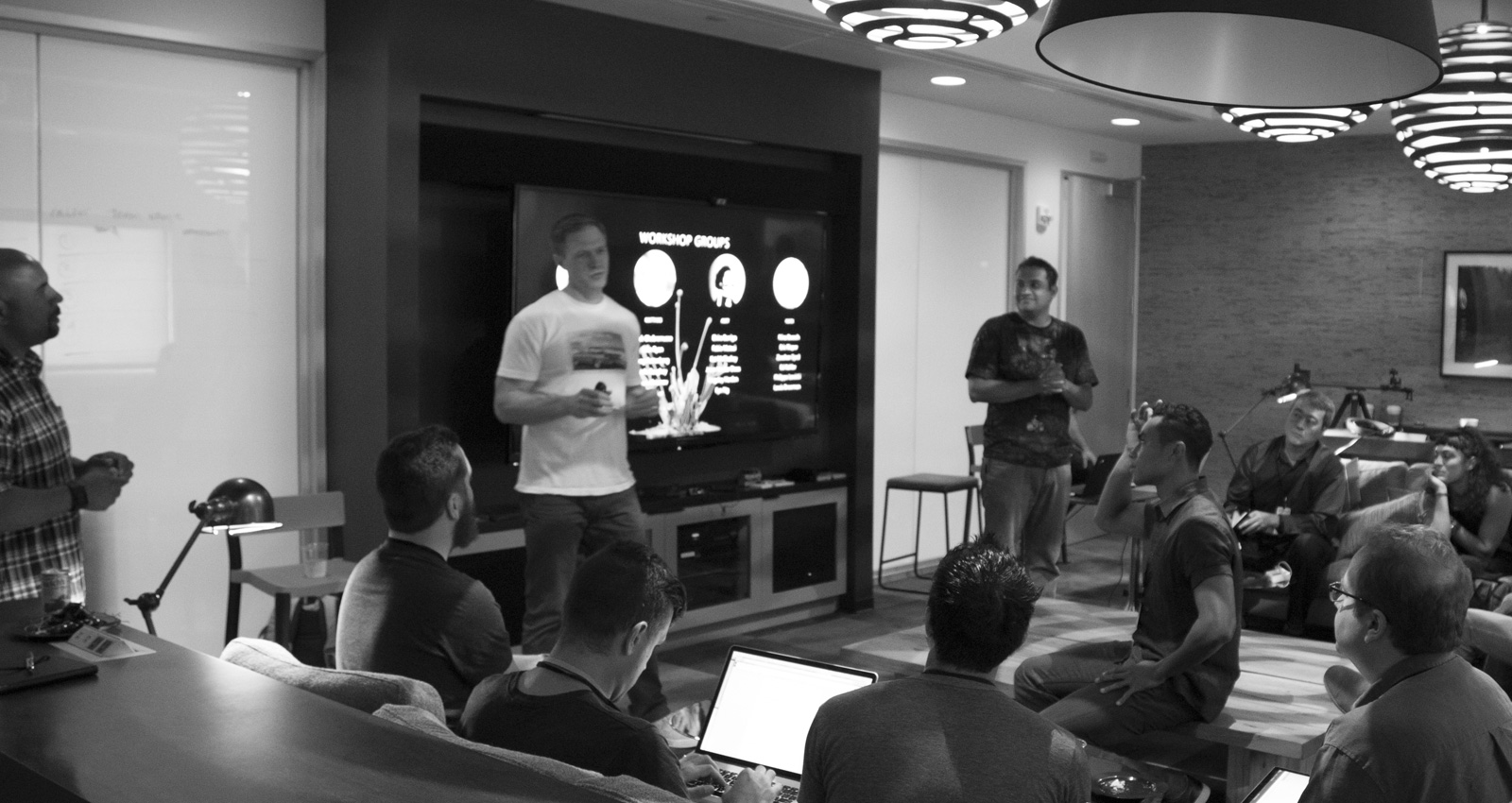
By the time I get down to pixels I hope to have a good understanding of what I’m going to design and prototype. The sketches, storyboards, scenarios, and narratives from the envisioning phase help to focus design time in front of the screen. If the output is for MR or VR, the prop-based prototyping that was done in envisioning helps to inform the scale of objects as well as the UX within a physical space or immersive experience.

During this phase, I expect to produce user flows, information architecture, experience models, visual designs, motion studies, and 3D assets if required. In addition, I will do light front-end prototyping or motion studies for POC. I primarily work with a dev for API hookup and extensive prototyping. Throughout this process, I’m checking in with team members, partners, and leadership to gather overall experience feedback. This feedback usually helps to inform alternate explorations or UX nuances within the designs and prototypes. The goal is to land 1-3 rough prototypes that can then be refined for testing.

Once I have a solid prototype or prototypes, it’s time to test and gather feedback. In my experience, depending on the scale of a product or feature release, testing can be done formally and/or informally. Ideally you can do both and conduct formal usability studies with outside participants as well as informal feedback studies with the product teams. During this period, we’re looking for the most common usability issues to emerge. The overall goal is to identify as many issues as possible to then address and fix.

Once we’ve identified the issues to fix, it’s back to pushing pixels and code. This process usually requires some design exploration and informal feedback. I usually host a few check-ins with select team members to validate my ideas. Once I feel we have adequately addressed the usability issues and feedback, we rinse and repeat steps 4 and 5 until we fix everything or run out of time. If the latter, we employ our customer feedback channels to gather feedback and inform the release cycles moving forward. BOOM! Ship it.
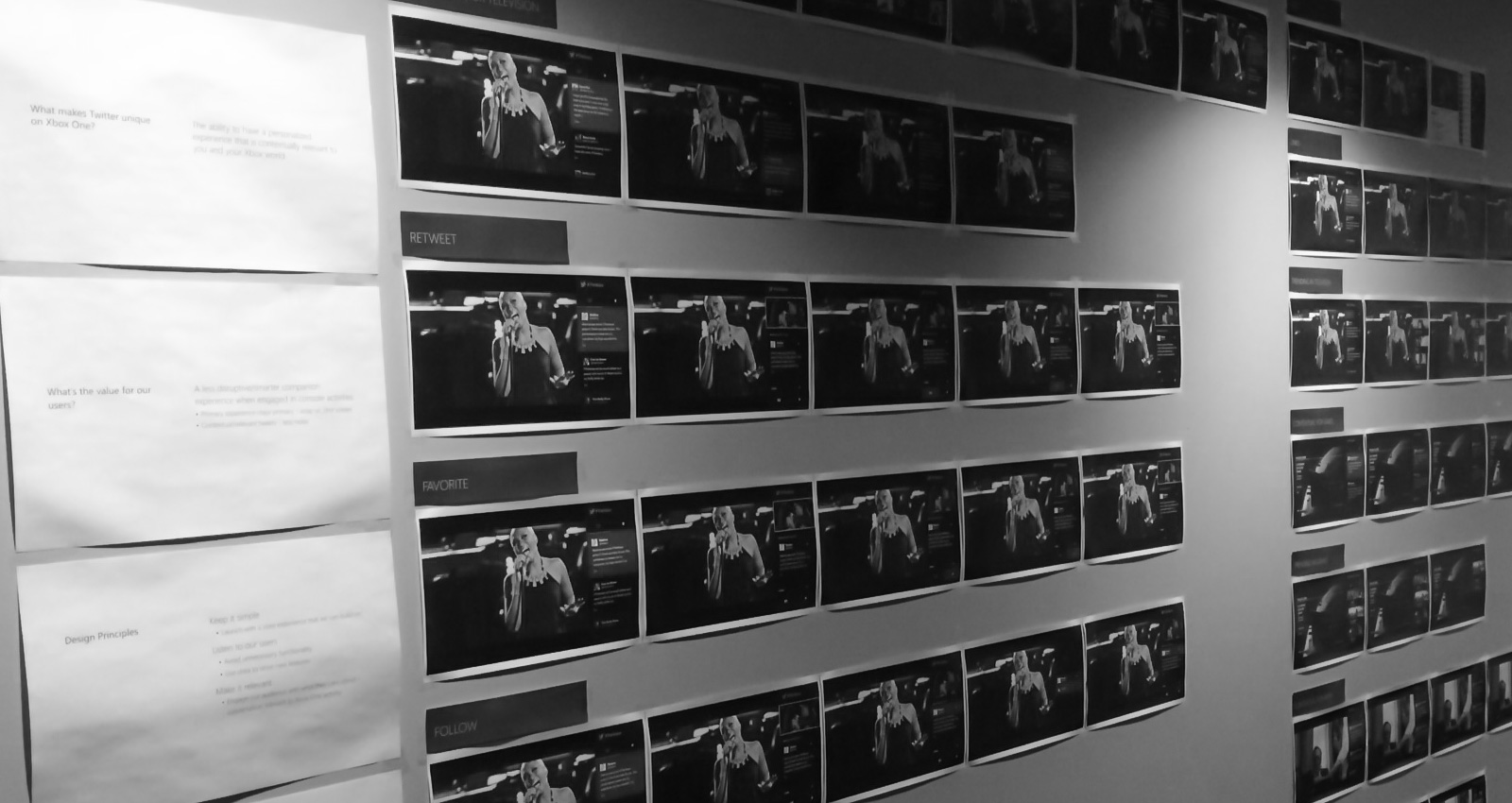

Discovery is the foundation to solving design problems. This is the point where you define the problem you’re solving, who you’re solving it for, and why it’s valuable for your customers and the business. The result enables you to make informed design decisions and serves to rationalize future ideas and hypotheses against. I typically focus on several areas of insight, such as, existing research, competitive analysis, existing or related user testing, and customer/user feedback, if it exists, to inform the following questions: What are we trying to solve? Who is our audience? Why is this valuable to our customers? What’s the value for our business?

Once I have a clear understanding of the problem I move onto envisioning. Envisioning is an ideation and funneling process used to address the problem space defined in the Discovery phase. It starts broad with a post-it slam or whiteboard session and distills through a grouping and filtering process. This is a collaborative exercise and I find more success in doing this as a group or a workshop with colleagues, partners, and/or clients. The final output is a collection of sketches, storyboards, scenarios, and/or narratives that have been vetted against the discovery output and are worthy of design exploration and prototyping. If the output is for MR or VR, prop-based prototyping will also be done.

By the time I get down to pixels I hope to have a good understanding of what I’m going to design and prototype. The sketches, storyboards, scenarios, and narratives from the envisioning phase help to focus design time in front of the screen. If the output is for MR or VR, the prop-based prototyping that was done in envisioning helps to inform the scale of objects as well as the UX within a physical space or immersive experience.

During this phase, I expect to produce user flows, information architecture, experience models, visual designs, motion studies, and 3D assets if required. In addition, I will do light front-end prototyping or motion studies for POC. I primarily work with a dev for API hookup and extensive prototyping. Throughout this process, I’m checking in with team members, partners, and leadership to gather overall experience feedback. This feedback usually helps to inform alternate explorations or UX nuances within the designs and prototypes. The goal is to land 1-3 rough prototypes that can then be refined for testing.

Once I have a solid prototype or prototypes, it’s time to test and gather feedback. In my experience, depending on the scale of a product or feature release, testing can be done formally and/or informally. Ideally you can do both and conduct formal usability studies with outside participants as well as informal feedback studies with the product teams. During this period, we’re looking for the most common usability issues to emerge. The overall goal is to identify as many issues as possible to then address and fix.

Once we’ve identified the issues to fix, it’s back to pushing pixels and code. This process usually requires some design exploration and informal feedback. I usually host a few check-ins with select team members to validate my ideas. Once I feel we have adequately addressed the usability issues and feedback, we rinse and repeat steps 4 and 5 until we fix everything or run out of time. If the latter, we employ our customer feedback channels to gather feedback and inform the release cycles moving forward. BOOM! Ship it.